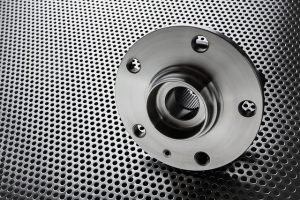
Have you heard of rubber pad forming? Based on the name alone, you may assume that it’s used to produce rubber products. Rubber pad forming, however, is actually a metalworking process that’s used to produce metal products. It’s simply called “rubber pad forming” because it uses rubber pads to deform a metal workpiece.
The Basics of Rubber Pad Forming
A form of deep drawing, rubber pad forming is a technique used in the manufacturing industry to manipulate sheet metal by pressing it between a series of rubber pads and a die. It’s not designed to cut sheet metal. Rather, rubber pad forming is designed to bend sheet metal using compressive forces.
How Rubber Pad Forming Works
Rubber pad forming works by sandwiching sheet metal between a die and a series of rubber pads. Sheet metal is secured to the pressing machine, after which it’s exposed to compressive forces. The rubber pads are located above the sheet metal, whereas the die is located below the sheet metal. When the pressing machine is turned on, the rubber pads push the sheet metal down and into the die. As a result, the sheet metal bends while taking the shape of the die.
Pros and Cons of Rubber Pad Forming
With rubber pad forming, manufacturing companies can safely manipulate the shape of finished or polished sheet metal. After finishing or polishing a piece of sheet metal, a manufacturing company may use rubber pad forming to change its shape. While other metalworking processes may damage the finished or polishing sheet metal, rubber pad forming will not. The rubber pads offer a soft and forgiving surface that won’t damage the sheet metal.
Rubber pad forming supports most types of sheet metal. Whether a piece of sheet metal consists of stainless steel, high-carbon steel or aluminum, it can be manipulated using rubber pad forming. This metalworking process even supports sheet metal measuring up to 4 millimeters thick, making it ideal for a variety of manufacturing-related applications.
On the other hand, rubber pad forming is a somewhat costly metalworking process. Manufacturing companies must build both the rubber pads as well as the dies used in this process. And while dies in rubber pad forming tend to last for a long time, the rubber pads do not. The high cost associated with this process makes rubber pad forming somewhat restrictive, especially for smaller manufacturing companies.
